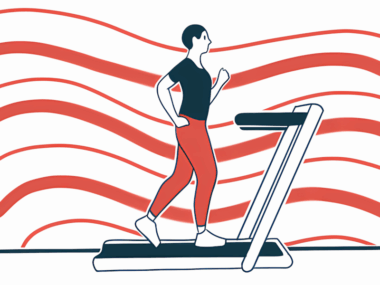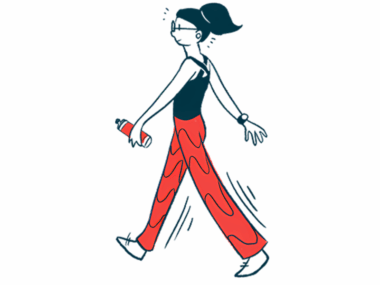Backward walking speed may be screening tool for mobility in MS
Diminished ability to alter speed tied to patient-reported disease severity
Written by |

Measures associated with how well individuals can modulate their backward walking speed could be used as a screening tool for mobility and cognition problems in people with multiple sclerosis (MS), according to a study by Michigan researchers.
A diminished ability to alter walking speed on demand correlated with worse self-reported disease severity and poorer performance on clinical assessments of mobility and cognitive function, the data showed.
The researchers hope these findings can inform the selection of sensitive clinical tests that might be used as a screening tool to evaluate MS patients and assess how at-risk they are for falls.
“Investigating markers of fall risk and cognitive decline that can be easily implemented into clinical practice are key for detecting and preventing falls before they happen,” Nora Fritz, PhD, an associate professor of physical therapy at Wayne State University, in Detroit, and the study’s senior author, said in a university press release.
The study, “Backwards walking speed reserve in persons with multiple sclerosis,” was published in Multiple Sclerosis and Related Disorders.
Many falls among MS patients happen in the backward direction
Movement problems are among the most commonly reported MS symptoms, affecting the vast majority of patients. Reduced walking speed and other gait impairments contribute to a higher risk of falls for people with MS and make it more difficult for patients to go about daily life independently.
According to the researchers, there’s a need for new ways to evaluate mobility in MS patients in the clinic so as to better understand their fall risk. Looking at a person’s walking speed — and the individual’s ability to modulate it as needed — offers a way of doing so.
Walking speed reserve, or WSR, refers to a person’s ability to increase his or her walking speed as needed, for example, when hurrying to catch a bus or rushing when running late.
It’s measured as the difference between the maximum speed one can walk and the speed at which the individual prefers to walk when not in a rush. A reduced WSR could mean a person is already walking very close to maximum capacity in daily life.
WSR might be a good measure for assessing mobility in MS patients, but studies have not found it to be a better predictor than just looking at maximum or preferred walking speeds alone.
Still, many everyday tasks don’t involve just forward movements. Backward movements, like backing up to sit down or to open a door, also are important for daily life. Research shows that MS patients have more deficits with backward walking than they do with forward walking — and many falls happen in the backward direction.
In this study, the researchers investigated the utility of backward WSR for evaluating the clinical status of MS patients.
A total of 23 adults with relapsing-remitting MS, who could walk with or without an assistive device more than half of the time, were included in the study.
During walking speed tests, participants were told to either walk at their usual speed or at their fastest but safest walking speed. A number of other patient surveys, mobility assessments, and cognitive evaluations also were completed on the same day.
Using backward walking as screening tool ‘more proactive than reactive’
In general, among the MS patients, a lower backward WSR, reflecting a reduced ability or willingness to increase speed as needed, was associated with greater self-reported disease severity. It also was tied to worse performance on clinical mobility assessments.
Still, much like previous observations with forward WSR, there was little evidence that looking at this measure was any better for predicting clinical outcomes than simply evaluating maximum or preferred walking speed alone. Moreover, forward walking metrics had a similar performance to backward ones.
Similarly, higher forward and backward speed metrics, including WSR, were associated with significantly better cognitive performance across domains, including information processing speed and attention.
Neither forward nor backward WSR correlated with expected fall rates or activity levels in MS patients.
Overall, “the [backward WSR] did not offer a distinct advantage over other measures,” the researchers wrote. Still, the findings offer insights into the most useful screening tools for monitoring MS patients in the clinic.
One of the unique and novel aspects of this paper was that it provided new insights in finding more sensitive outcomes and measures for screening function mobility in people with multiple sclerosis. … [It] could be a sensitive metric to measure how people can handle their mobility options and detect those who are at risk of falls and mobility impairments.
Patrick Monaghan, PhD, a postdoctoral research fellow at Wayne State and one of the study’s first authors, said “one of the unique and novel aspects of this paper was that it provided new insights in finding more sensitive outcomes and measures for screening function mobility in people with multiple sclerosis.”
The ultimate hope with a measure like backward WSR, according to Monaghan, is that it “could be a sensitive metric to measure how people can handle their mobility options and detect those who are at risk of falls and mobility impairments.”
“It’s being more proactive than reactive to these potential issues,” Monaghan added.







